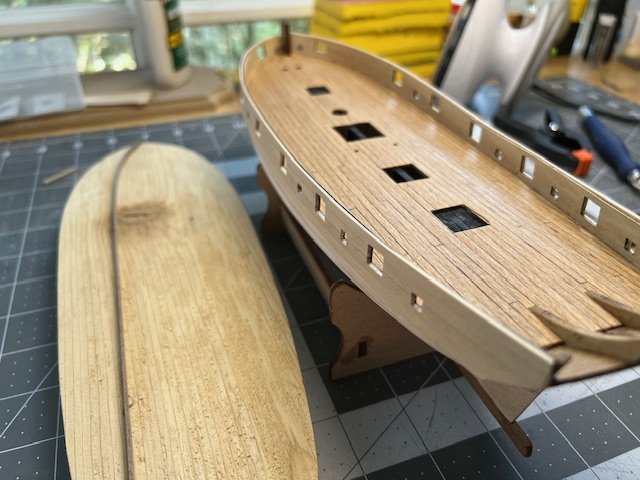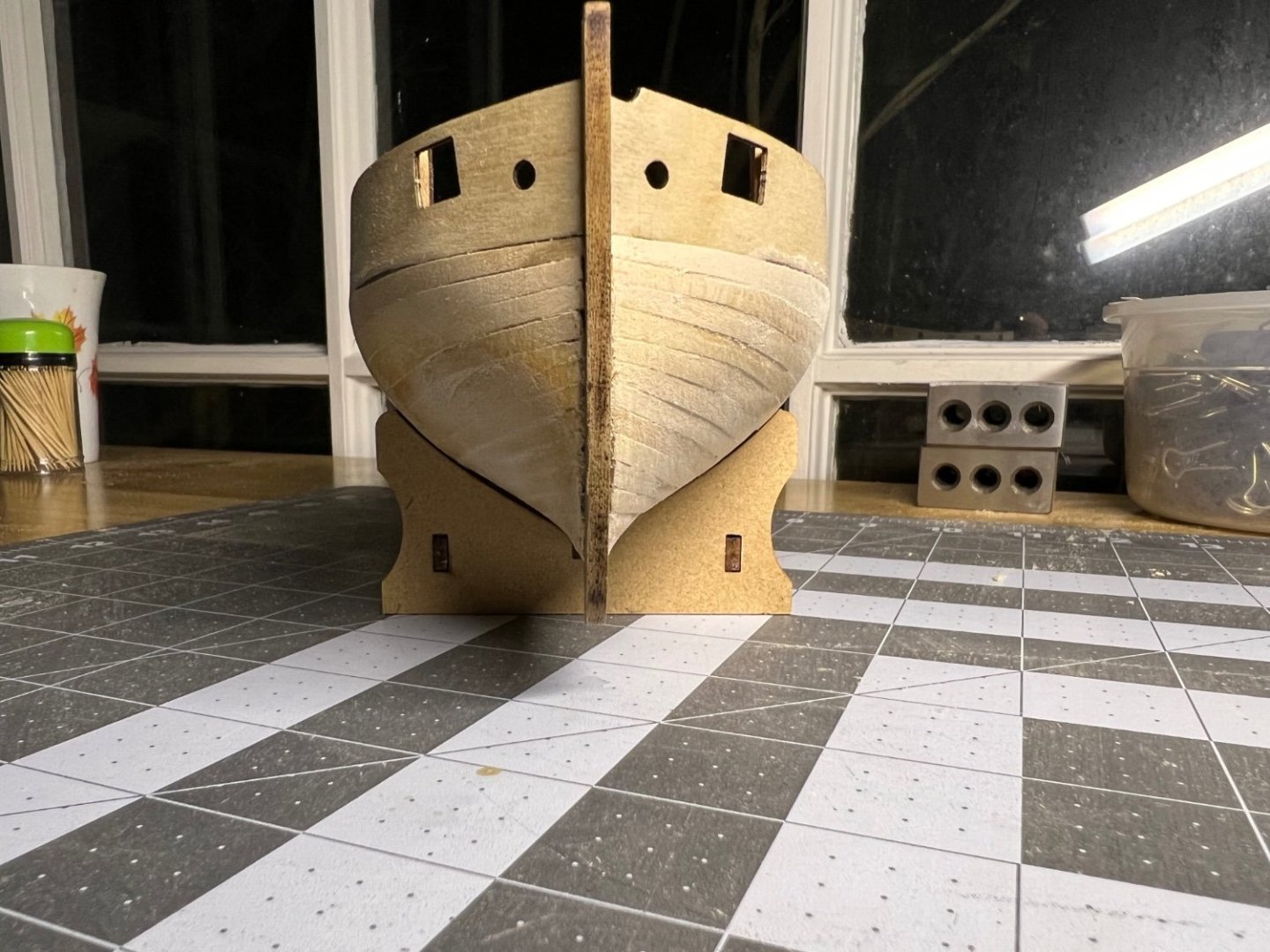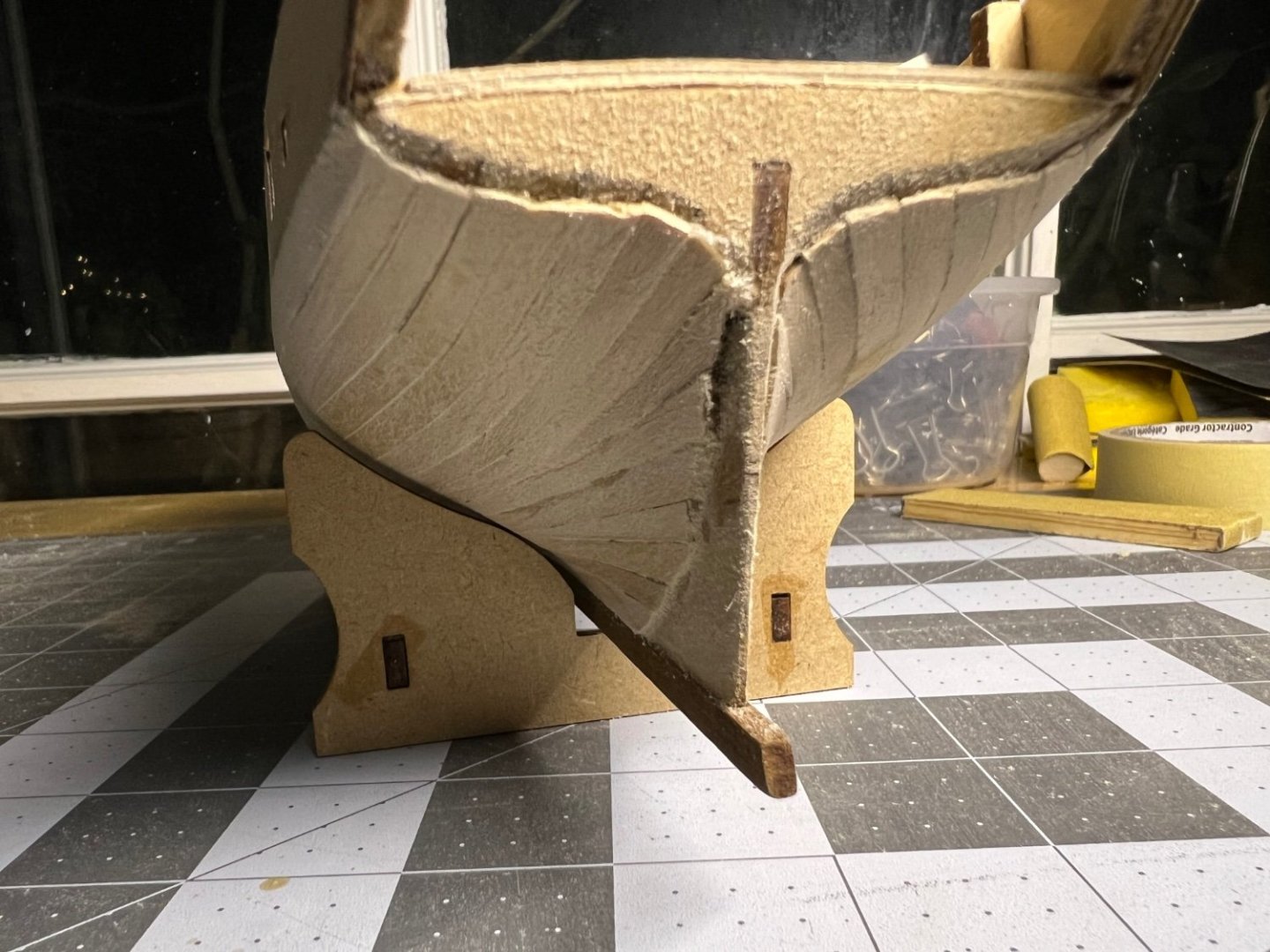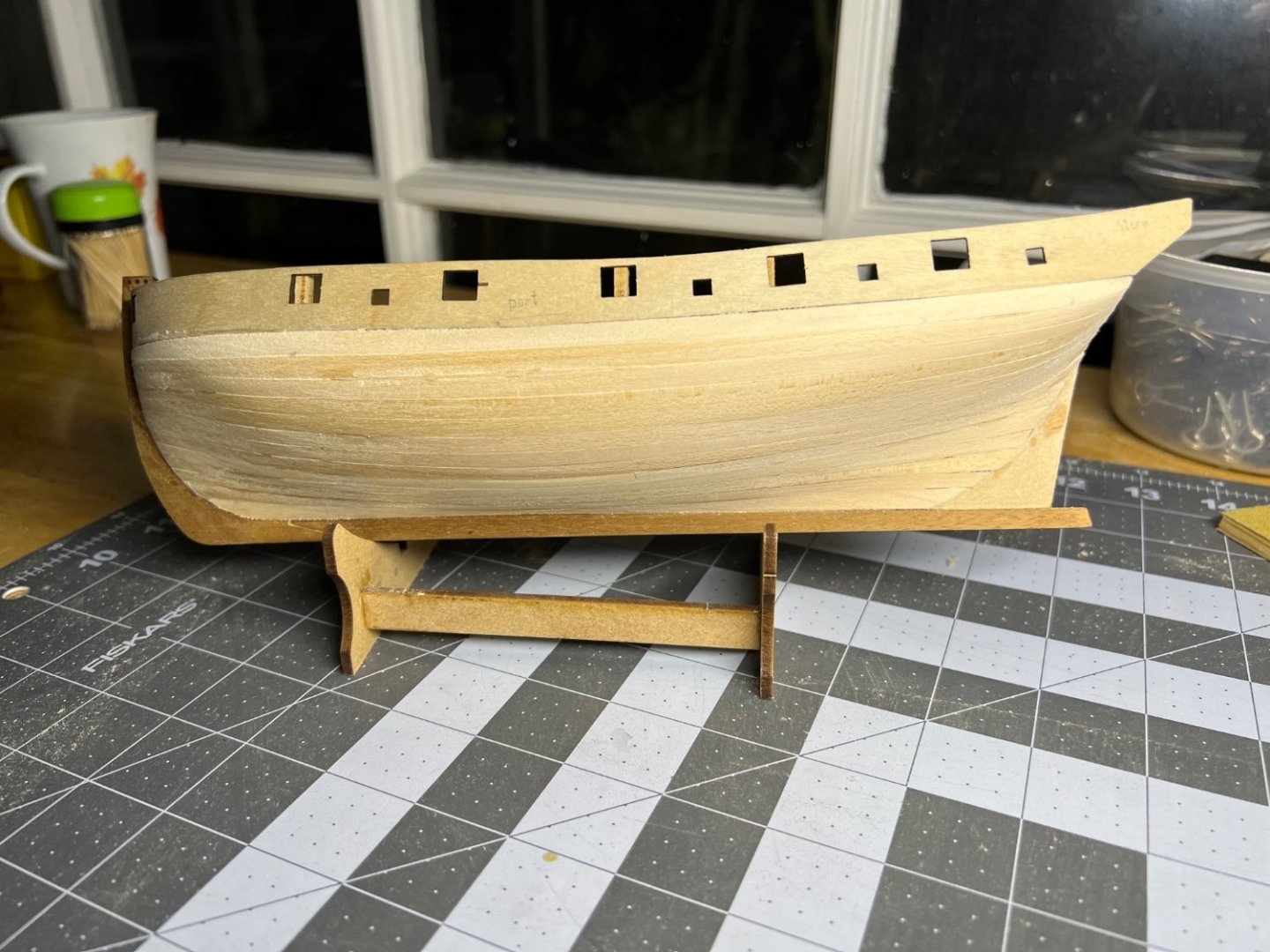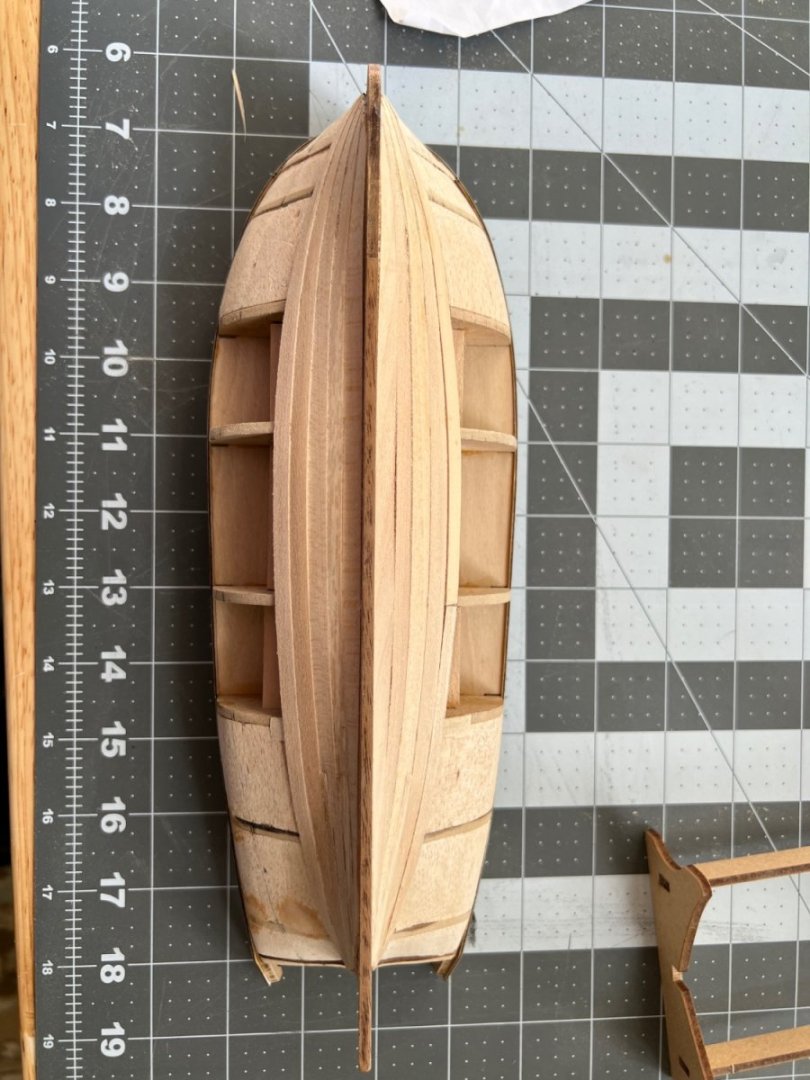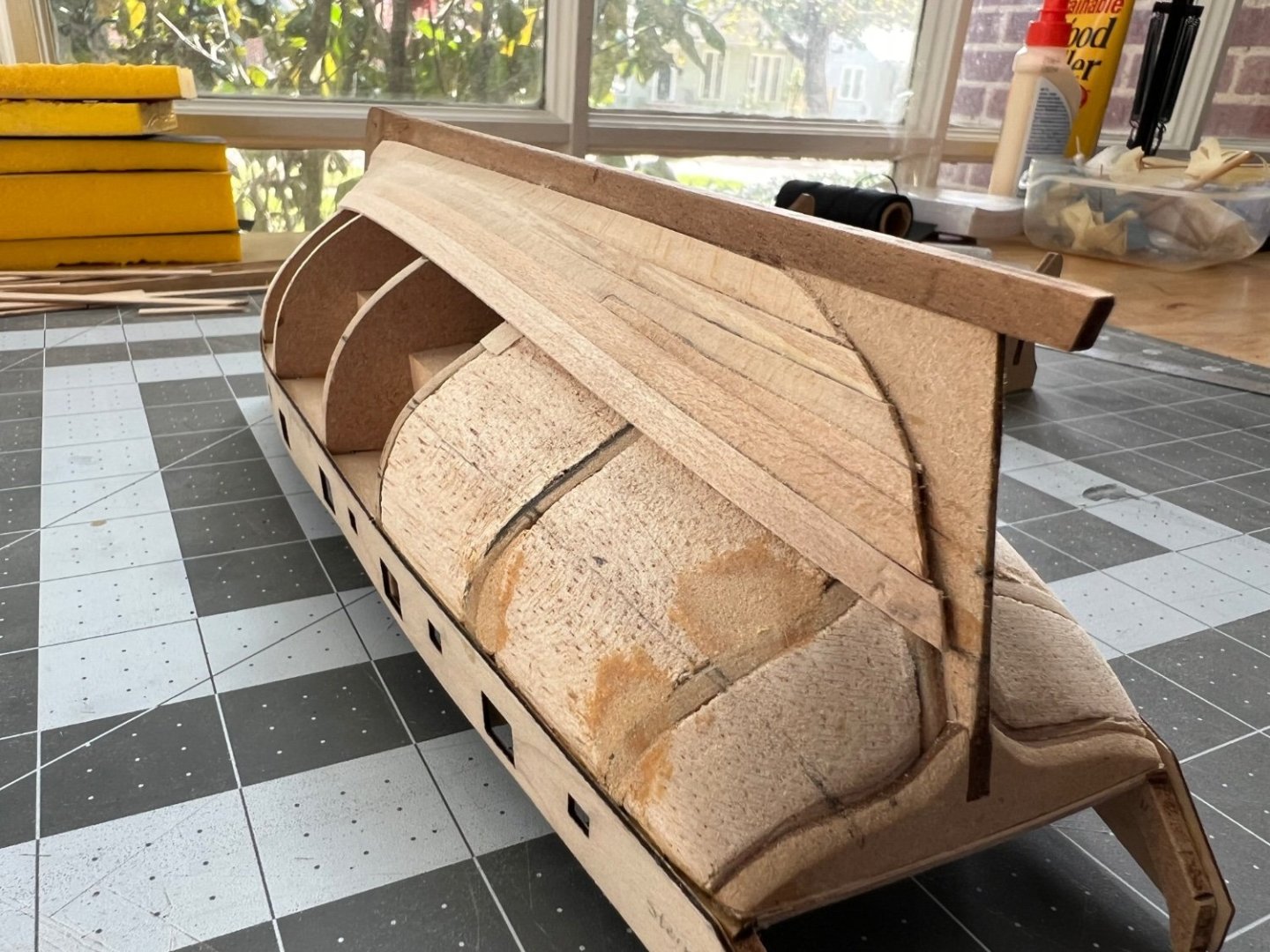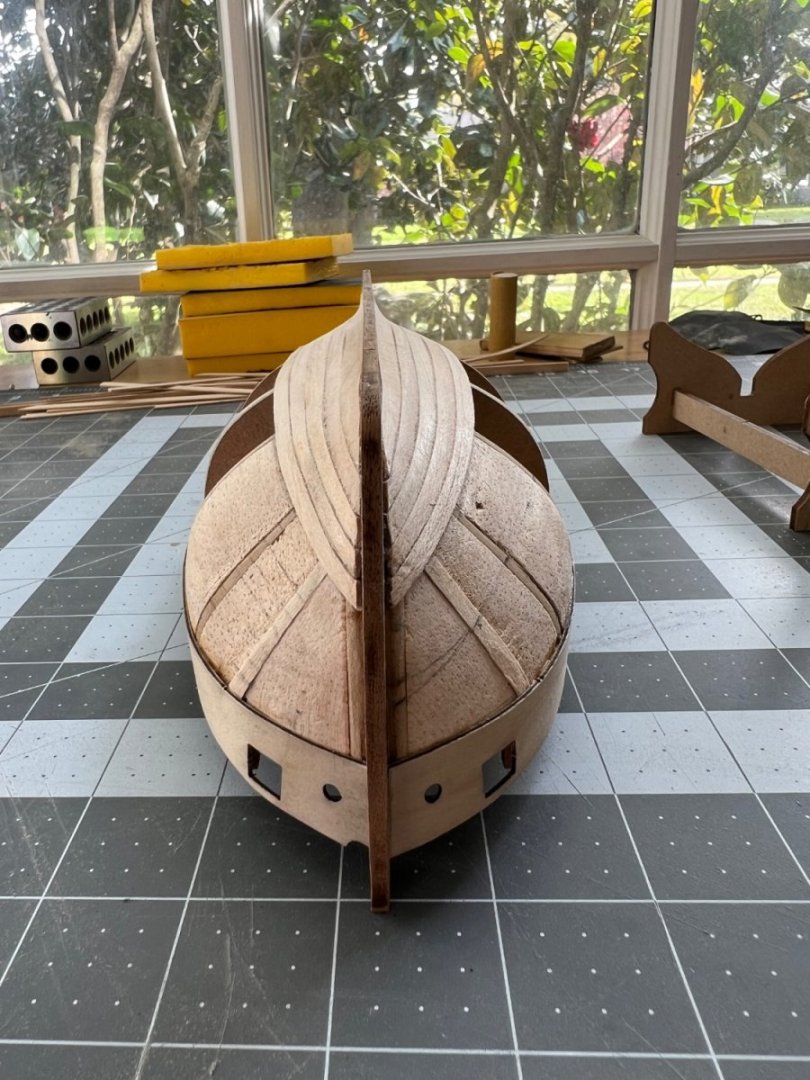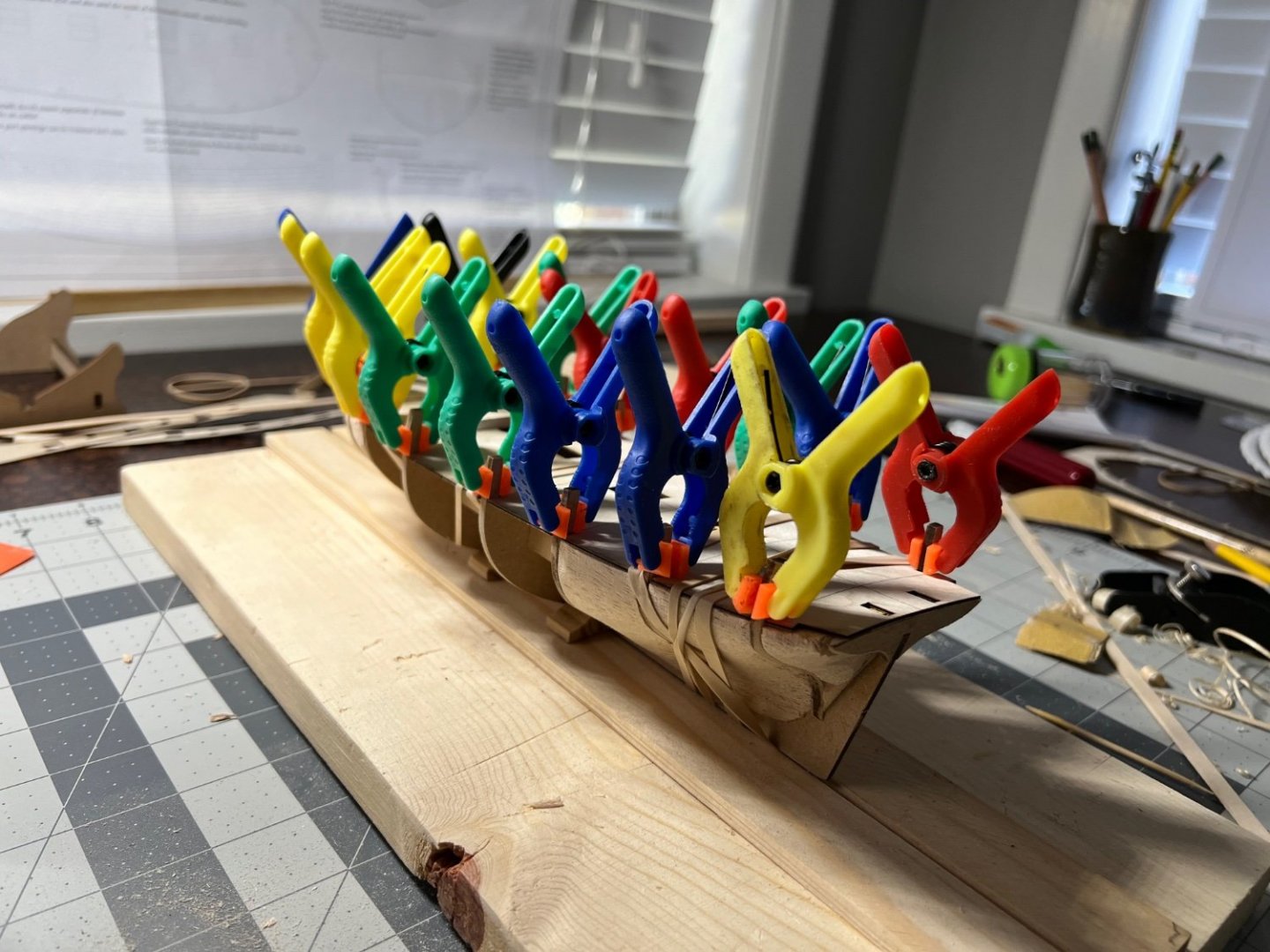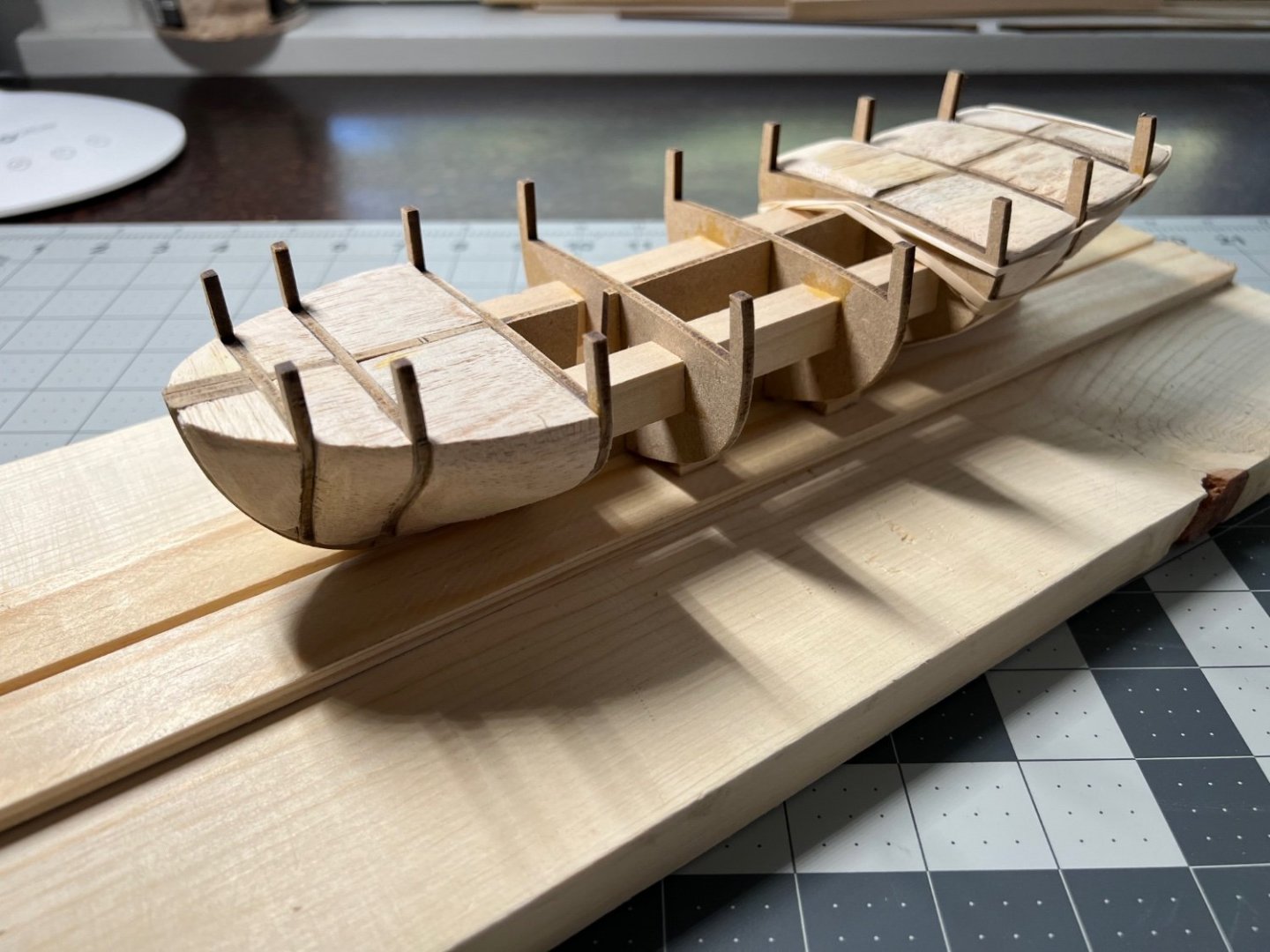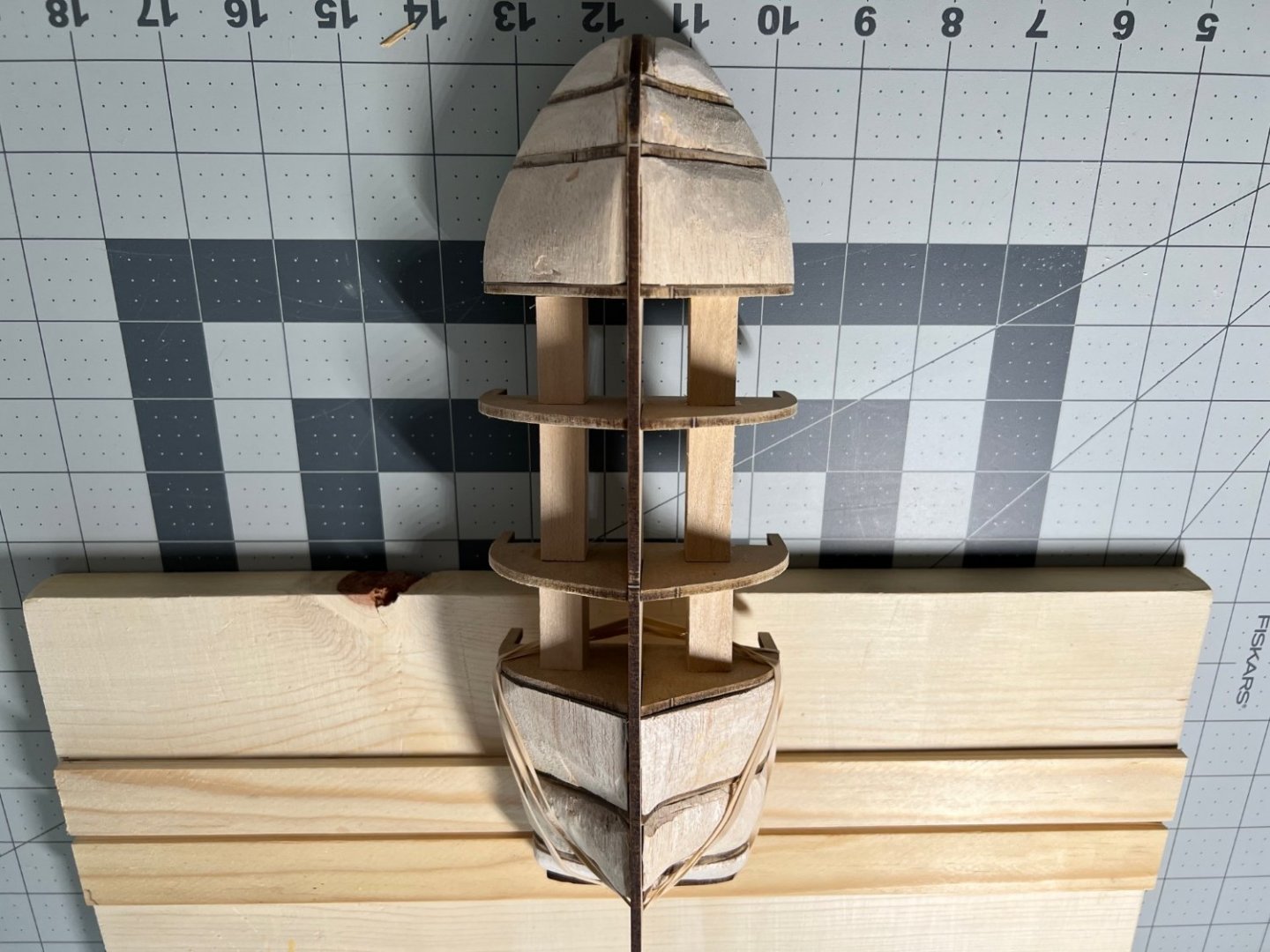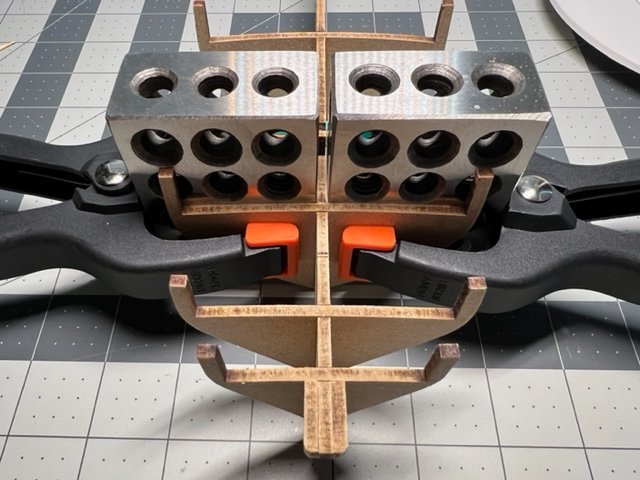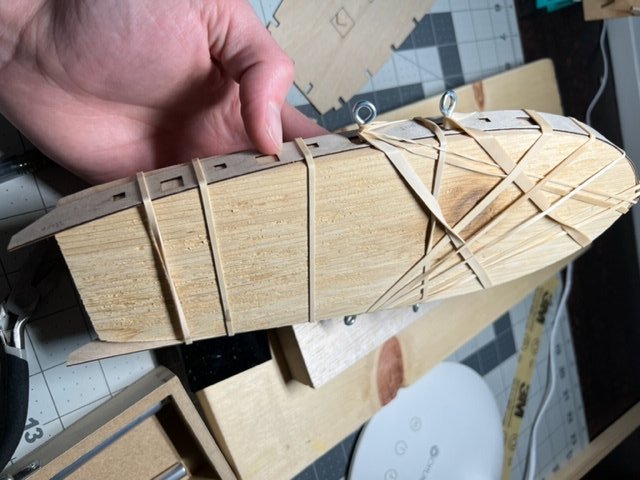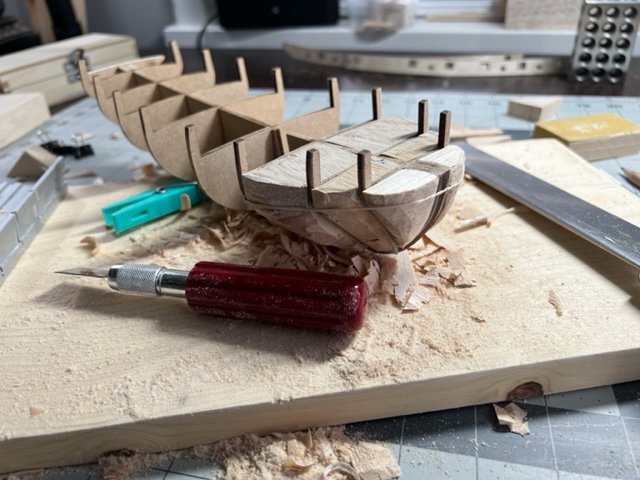
JGoff
NRG Member-
Posts
21 -
Joined
-
Last visited
About JGoff

Recent Profile Visitors
-
 JGoff reacted to a post in a topic:
HM Cutter Alert by Thukydides - Vanguard Models - 1:64 - first build
JGoff reacted to a post in a topic:
HM Cutter Alert by Thukydides - Vanguard Models - 1:64 - first build
-
 JGoff reacted to a post in a topic:
HM Gun Brig Adder 1797 by DB789 - Vanguard Models - 1:64
JGoff reacted to a post in a topic:
HM Gun Brig Adder 1797 by DB789 - Vanguard Models - 1:64
-
 JGoff reacted to a post in a topic:
HMS Flirt by wvdhee - Vanguard Models - 1:64
JGoff reacted to a post in a topic:
HMS Flirt by wvdhee - Vanguard Models - 1:64
-
 JGoff reacted to a post in a topic:
HMS Pegasus 1776 by Moonbug - Amati/Victory Models - 1:64
JGoff reacted to a post in a topic:
HMS Pegasus 1776 by Moonbug - Amati/Victory Models - 1:64
-
 JGoff reacted to a post in a topic:
HM Cutter Alert by Thukydides - Vanguard Models - 1:64 - first build
JGoff reacted to a post in a topic:
HM Cutter Alert by Thukydides - Vanguard Models - 1:64 - first build
-
 JGoff reacted to a post in a topic:
HMS Sphinx 1775 by cdrusn89 - Vanguard Models - 1/64
JGoff reacted to a post in a topic:
HMS Sphinx 1775 by cdrusn89 - Vanguard Models - 1/64
-
 JGoff reacted to a post in a topic:
HMS Sphinx 1775 by cdrusn89 - Vanguard Models - 1/64
JGoff reacted to a post in a topic:
HMS Sphinx 1775 by cdrusn89 - Vanguard Models - 1/64
-
 Bertilon reacted to a post in a topic:
HM Cutter Lady Nelson by Bertilon - Amati/Victory Models - 1/64 - first build
Bertilon reacted to a post in a topic:
HM Cutter Lady Nelson by Bertilon - Amati/Victory Models - 1/64 - first build
-
 Danstream reacted to a post in a topic:
Lady Nelson by JGoff - Amati/Victory Models - 1:64 - First Ship Build
Danstream reacted to a post in a topic:
Lady Nelson by JGoff - Amati/Victory Models - 1:64 - First Ship Build
-
 Gregory reacted to a post in a topic:
Lady Nelson by JGoff - Amati/Victory Models - 1:64 - First Ship Build
Gregory reacted to a post in a topic:
Lady Nelson by JGoff - Amati/Victory Models - 1:64 - First Ship Build
-
 JGoff reacted to a post in a topic:
HMS Beagle by brunnels - OcCre - 1:60 - first build
JGoff reacted to a post in a topic:
HMS Beagle by brunnels - OcCre - 1:60 - first build
-
 brunnels reacted to a post in a topic:
Lady Nelson by JGoff - Amati/Victory Models - 1:64 - First Ship Build
brunnels reacted to a post in a topic:
Lady Nelson by JGoff - Amati/Victory Models - 1:64 - First Ship Build
-
 allanyed reacted to a post in a topic:
Lady Nelson by JGoff - Amati/Victory Models - 1:64 - First Ship Build
allanyed reacted to a post in a topic:
Lady Nelson by JGoff - Amati/Victory Models - 1:64 - First Ship Build
-
 Mr Whippy reacted to a post in a topic:
Lady Nelson by JGoff - Amati/Victory Models - 1:64 - First Ship Build
Mr Whippy reacted to a post in a topic:
Lady Nelson by JGoff - Amati/Victory Models - 1:64 - First Ship Build
-
 Thukydides reacted to a post in a topic:
Lady Nelson by JGoff - Amati/Victory Models - 1:64 - First Ship Build
Thukydides reacted to a post in a topic:
Lady Nelson by JGoff - Amati/Victory Models - 1:64 - First Ship Build
-
 ccoyle reacted to a post in a topic:
Lady Nelson by JGoff - Amati/Victory Models - 1:64 - First Ship Build
ccoyle reacted to a post in a topic:
Lady Nelson by JGoff - Amati/Victory Models - 1:64 - First Ship Build
-
I have planked above the wales with some remaining basswood I had from the Half-Hull Project. It is probably not ideal compared to boxwood or Alaskan Yellow Cedar, but I like the yellow-ish color when it has a few coats of WOP. For the remaining planking, I'll use the kit supplied walnut. I did like the contrast that I noted in glbarlow's Lady Nelson, and that is the effect I am going for here. Dealing with the gunports was more challenging than I had expected, and had I planned a little better, I would have marked the gunports and such to precut before applying the planks. Since that it was not what I did, I made some cuts with #11 blade and did a lot of filing. Once I had the planking completed above the wales, I decided to take a break on the hull and move on to planking the deck. I have agonized over whether or not I would do a proper deck planking with waterways, tapering and joggling of the planks. In the end, however, I decided to simply go with a 4-butt shift using a 6B graphite pencil to simulate the caulking. I think for a future builds, I will go through the extra work and make some purchases of higher quality wood. With the kit supplied deck planking, I had to do a lot of sanding to smooth out the edges. I do not know if this typical. Perhaps with .6mm thick plank, the cuts are not so clean in production? At any rate, sanded and marked, I completed the planking with Minwax "weathered oak". The picture makes it appear darker than it is, and it probably too dark for my liking now that the work is done. Overall, I am pleased with the result but also look forward to future improvements. Planking the inner-bulwarks is proving to be a bit of a challenge. I am using the jig that I made for bending the bulwark strips, as well as a bit of water and a travel iron to form the plank. However, the plank is still proving a little difficult to set, which makes me think that I made need to compensate a bit more and exaggerate the bend some water and my fingers to set it. I think for now, though, I am going to go back to the hull and finish the 2nd planking. Thanks for tuning in and for the likes.
- 41 replies
-
- Lady Nelson
- Amati
-
(and 2 more)
Tagged with:
-
 JGoff reacted to a post in a topic:
HM Sloop Echo 1781 by VTHokiEE - 1:48 - Cross-Section
JGoff reacted to a post in a topic:
HM Sloop Echo 1781 by VTHokiEE - 1:48 - Cross-Section
-
 JGoff reacted to a post in a topic:
NRG Rigging Project by tlevine
JGoff reacted to a post in a topic:
NRG Rigging Project by tlevine
-
Welcome aboard! I’m working on Lady Nelson right now, as well. I’ll pull up a chair.
- 3 replies
-
- Lady Nelson
- Amati
-
(and 2 more)
Tagged with:
-
 Knocklouder reacted to a post in a topic:
HM Cutter Alert by Thukydides - Vanguard Models - 1:64 - first build
Knocklouder reacted to a post in a topic:
HM Cutter Alert by Thukydides - Vanguard Models - 1:64 - first build
-
 flutlo6180 reacted to a post in a topic:
HM Cutter Alert by Thukydides - Vanguard Models - 1:64 - first build
flutlo6180 reacted to a post in a topic:
HM Cutter Alert by Thukydides - Vanguard Models - 1:64 - first build
-
I concur with Allan. Your work and attention is exceptional.
- 479 replies
-
- vanguard models
- alert
-
(and 1 more)
Tagged with:
-
I have finished the first planking and have done some sanding. There were some difficulties at the bow and stern areas that betrayed my fairing job. I had to do a little more sanding and shem some bulkheads will definitely need some filler. I started using minwax wood filler on the starboard side, and I’m not sure if is the best filler for the job? It tends to be very flaky but this may not matter much? At any rate, I just received some goodfillas neutral filler so I’ll use that on the port side and compare. Here are some photos after some sanding.
- 41 replies
-
- Lady Nelson
- Amati
-
(and 2 more)
Tagged with:
-
It is hard to believe it has been 2 years since my last post here, although I have certainly not been absent. I put Lady Nelson on hold and decided to work on the Half-Hull Planking Project which was enormously helpful in getting over the planking hurdle I was having. There is much that can be improved, so we shall see I can continue to improve my planking skills with Lady Nelson. Understanding that this is the 1st planking, I am not overly concerned with attempting excellence for the first layer, simply dabbing a little water on the areas of the planking where I will edge bend them and gently bending the planks using my fingers which has so far been sufficient to the task. I am just building a base for my second planking. Here are the results so far with the first band.
- 41 replies
-
- Lady Nelson
- Amati
-
(and 2 more)
Tagged with:
-
Hey John, thanks for your taking time to respond. I haven’t yet installed the bulwarks, and so I thought to install the frames so that when I do install the bulwarks, I can attach those properly. I may not be naming those pieces correctly. I’ve started to come around to this. I believe that I have faired the frames sufficiently, and really the best way to understand the process is to see the result for what it is supposed to accomplish and just start planking…once I get those bulwarks taken care of. I’ll take care of that this evening and start moving forward on the planking. One thing about the planking is that when I take a test plank and lay it across three bulkheads, everything lays properly. When I add a fourth bulkhead to the mix and hold the plank at either end, I start to see some gaps until I lay more fingers down on the plank. Everything seems ready to go and then I might overthink the issue. So I am just gonna have to start, and I’ll check out those posts you sent me. Thanks for the advice, Allan. I hadn’t thought to check out those drawings. And I’ll be double planking so my thought was that the first planking would extend to the bearding line and the second planking to the stern post rabbet? Otherwise I might end up sanding the most of stern down to accommodate the thickness of both layers of planking to be flush with the stern post, yes? I haven’t yet done much reading on the bearding line and rabbet, but it’s on the list of things I need to study. Thanks Kirby! It has definitely had its share of frustrations thus far, but I do enjoy the process and seeing the little transformations. Plus, I’ve been finding myself reading more about the period and naval warfare, which - along with Aubrey - supplies some motivation.
- 41 replies
-
- Lady Nelson
- Amati
-
(and 2 more)
Tagged with:
-
Thanks drjeckl! I actually recall your post perusing through some of the build logs when I first started, and I appreciate you taking the time to check out my log. I believe there were only 8 of those short/partial videos on the Amati website, and when I checked the model shipyard website, I could purchase a DVD set for $60 with the full instructional videos. Perhaps the fact that I no longer own a DVD player saved me from making the purchase. What was useful though for me was his explanation and demonstration of fairing, which I haven't really been able to find from casually searching for information on the fairing process here (which I'm still sort of stuck on). Yesterday, I set up a planking station and started trying out Chuck's method for bending planks (though I am not ready to start planking at the moment). I am going to have find some information on where the proper bend in the plank is supposed to be since I screwed that up twice, and evidently did not fully understand or implement Chuck's instruction properly. Now I did not do a taper on the first plank (which I was experimenting with a first plank as if I was ready to do it), since I had read somewhere that the first couple of planks did not require a taper on this model. So I either should have done a taper on the plank, or I most certainly created the bend in the wrong place. I recall @glbarlow posting that somewhere in response to another log, but haven't found it again yet. It might be prudent to start keeping a separate journal to record good information that I read, so I can remember the details! So for the moment, I continue fairing. It seems that every time I leave the LN for a moment thinking that the fairing is done, I come back to it and realize there are some spots that need more work. I did want to feel a little visual movement forward, so I went ahead and glued the outside stern counter frames which seem to need a little sanding to conform fully to the hull and allow for the bulwark to have a tight fit towards the stern.
- 41 replies
-
- Lady Nelson
- Amati
-
(and 2 more)
Tagged with:
-
Your Lady Nelson is coming along quite nicely, Dave! I’ve been enjoying watching your progress.
- 362 replies
-
- Amati
- Lady Nelson
-
(and 2 more)
Tagged with:
-
I came across this series of videos on the LN while browsing the Amati website. In particular, the fourth video demonstrates the fairing process. It seems helpful for visualizing the fairing process.
- 41 replies
-
- Lady Nelson
- Amati
-
(and 2 more)
Tagged with:
-
I don’t know if I should have paid more attention to the grain of the balsa, but it has been a heck of a time getting it shaved/sanded down. In the process, I suppose there has been a good deal of hull fairing in the fore and aft bulkheads (did I use that terminology correctly) After sanding and filing the top, I was able to get the false deck installed. I would feel remiss if I did not include the necessary photo of the clamp army holding down the deck. I did get my Stanley plane in and you may can see on the right of the photo the results of me playing around with it on a balsa strip. I haven’t used it yet on the LN, but I’ll expect that I will need it when I get to the masts. There are a few points about fairing the hull that I have questions about. I’ll be posting some more photos soon, and hopefully my apprehension about this process might be alleviated.
- 41 replies
-
- Lady Nelson
- Amati
-
(and 2 more)
Tagged with:
-
Yes…I’m still working on getting everything sanded. Was able to get them cut out and shaped this weekend. Still much more work to do to finish that before I can move forward.
- 41 replies
-
- Lady Nelson
- Amati
-
(and 2 more)
Tagged with:
-
Indeed. Every problem with planking that I have seen, seems to be traced back to a problem with fairing the hull.
- 41 replies
-
- Lady Nelson
- Amati
-
(and 2 more)
Tagged with:
-
I have been a busy little bee this Sunday. I have finished cutting out and shaping my blocks to fill in between the bow and stern bulkheads, and I added some additional support between the remaining bulkheads. The bulkheads just seem to shift too much, and though I admit this might be a bit overkill, it gives me a bit more peace of mind as I anticipate the fairing process. I also made a “dockyard” of sorts, finally. Once the glue cures, I’m going to continue sanding and sanding and sanding some more before I finally start fairing the hull 🙂. Based on what I have been seeing from other logs, it seems prudent to wait adding the keel and prow until that has been completed. Stay tuned…
- 41 replies
-
- Lady Nelson
- Amati
-
(and 2 more)
Tagged with:
-
Saturday Morning Update: Taking @glbarlow advice, I took my time squaring and gluing the bulkheads, and the 1x2x3 blocks worked well with the addition of clamps. The visual @starlight was indeed helpful in moving forward. I also started bending the bulwarks. After reviewing a few build logs of the LN, it seemed that a few folks made a wood pattern for the soaked bulwark to form against. So I traced the shape of the false deck onto a scrap piece of board, cut it, sanded and proceeded with the soaking, etc before strapping them on with rubber bands. I used a pin vise and screwed whatever those little thingies are (they were lying around the house somewhere) into the gunports to anchor the rubber bands. I do not yet know whether the edge of bow will be curved enough, but as I get the false deck, keel and prow installed, I will know more then. And finally....I decided to insert balsa at the bow and stern to add support and aid in the planking. At the moment I have only worked on the bow doing some general shaping - still more and then some sanding. This part has been a little time consuming, which was one of the reasons that I wasn't sure that I wanted to go forward with that. However, after having started it, it just reminds me to accept that this will be a slow build and that I should not try and rush each step. Each little component or micro-project is a step forward in the build. And as each step starts to take shape and come together, that is exciting to watch. Thanks guys for the advice and encouragement! More to come.
- 41 replies
-
- Lady Nelson
- Amati
-
(and 2 more)
Tagged with:
-
Thanks Allan! I took @Oldsalt1950 up on his recommendation for the 1x2x3 blocks. Those should come in today. The lego jig is an interesting idea...might have to make a purchase and try those out at some point. I have finally have gotten all the bulkheads removed that needed removing, lightly sanded off some of the glue. Hopefully, I'll receive those blocks today, as well as some other necessary tool/paint purchases made a few days ago. I am leaning in the direction of adding some balsa wood blocks in between the bow and stern bulkheads. I'm sure there are some lengthy discussions about this, but I'm thinking a hand saw and sandpaper - perhaps an Xacto blade - will be all that is really required to get those fit and carved. Chisels might make the work easier? Any thoughts about the most efficient way of going about this?
- 41 replies
-
- Lady Nelson
- Amati
-
(and 2 more)
Tagged with:
About us
Modelshipworld - Advancing Ship Modeling through Research
SSL Secured
Your security is important for us so this Website is SSL-Secured
NRG Mailing Address
Nautical Research Guild
237 South Lincoln Street
Westmont IL, 60559-1917
Model Ship World ® and the MSW logo are Registered Trademarks, and belong to the Nautical Research Guild (United States Patent and Trademark Office: No. 6,929,264 & No. 6,929,274, registered Dec. 20, 2022)
Helpful Links
About the NRG
If you enjoy building ship models that are historically accurate as well as beautiful, then The Nautical Research Guild (NRG) is just right for you.
The Guild is a non-profit educational organization whose mission is to “Advance Ship Modeling Through Research”. We provide support to our members in their efforts to raise the quality of their model ships.
The Nautical Research Guild has published our world-renowned quarterly magazine, The Nautical Research Journal, since 1955. The pages of the Journal are full of articles by accomplished ship modelers who show you how they create those exquisite details on their models, and by maritime historians who show you the correct details to build. The Journal is available in both print and digital editions. Go to the NRG web site (www.thenrg.org) to download a complimentary digital copy of the Journal. The NRG also publishes plan sets, books and compilations of back issues of the Journal and the former Ships in Scale and Model Ship Builder magazines.




